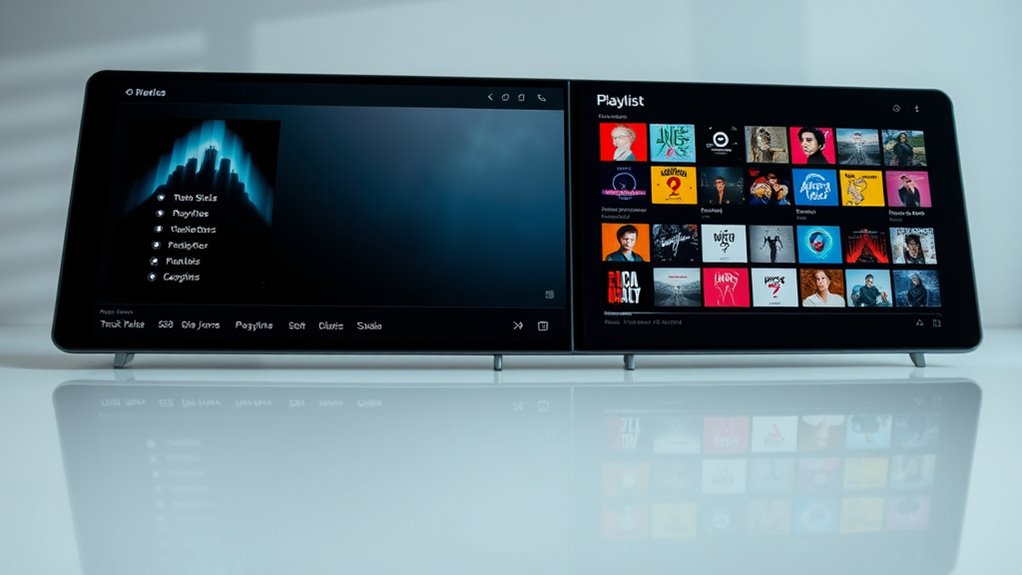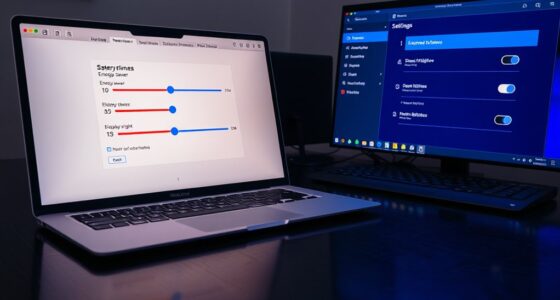Exploring different track versions and curated playlists helps you discover new musical ideas by showcasing how small changes, alternative arrangements, and remix variations can shift mood, energy, and perception. You can compare vocal, bass, or beat-focused versions to understand how production techniques influence sound. Creating and analyzing these playlists pushes your boundaries and sparks creativity, revealing fresh directions for your projects. Keep exploring, and you’ll uncover even more ways to innovate with music.
Key Takeaways
- Exploring multiple track versions reveals diverse arrangements, techniques, and moods, inspiring fresh creative directions.
- Curated playlists of remixes and alternate takes foster experimentation with sound design and production approaches.
- Analyzing different mixes enhances understanding of how arrangement choices influence listener perception.
- Using track variations encourages active listening, helping identify unique elements and new ideas for projects.
- Organized playlists serve as a resource for ongoing musical growth and discovering unexpected creative possibilities.

When exploring new musical ideas or experimenting with different sounds, utilizing track versions and playlists can be incredibly effective. These tools allow you to approach your creativity from multiple angles, giving you the flexibility to find fresh inspiration and refine your sound. Remix variations, in particular, are a valuable resource. They offer different takes on the same song, highlighting various elements like vocals, basslines, or beat structures. Listening to these variations helps you understand how small changes can dramatically alter a track’s mood or energy, sparking new ideas for your projects. Remixing isn’t just about copying; it’s a creative process that reveals how different arrangements and production techniques impact the listener. By analyzing various remix variations, you can discover unique approaches to rhythm, harmony, and sound design that might inspire your next track.
Playlist curation also plays a significant role in fostering your creative flow. Curating playlists with a mix of original songs, remixes, and alternative versions gives you a curated environment to explore different sonic textures and styles. It’s about assembling a collection that reflects your evolving tastes and experimental goals. When you consciously select tracks that push boundaries or offer diverse interpretations, you create a listening experience that encourages you to think outside the box. As you listen, you may notice recurring motifs or production techniques that resonate with your ideas, prompting you to incorporate similar elements into your own work. Furthermore, playlists can serve as a testing ground for new concepts—by cycling through different versions, you get a sense of what works best, which can inform your production decisions.
Understanding the variety of versions available for each song can help you identify new techniques and approaches that enhance your own production skills. Using these tools, you’re not limited to a single version of a song or a narrow musical perspective. Instead, you embrace variety, making it easier to discover unexpected directions for your music. Whether it’s experimenting with remix variations or carefully curating playlists, these methods foster a dynamic environment for growth. They encourage active listening—analyzing how different elements interact and influence mood—and help you cultivate a more versatile approach to your craft. Over time, this practice enhances your ability to craft tracks that are innovative, layered, and emotionally compelling. Ultimately, track versions and playlist curation aren’t just about organization—they’re powerful strategies to liberate your creative potential and develop a more nuanced understanding of sound.
Frequently Asked Questions
How Can I Organize Multiple Versions of the Same Track Effectively?
You can organize multiple track versions effectively by using version tagging to label each one clearly, like “Acoustic” or “Remix.” Incorporate playlist categorization by creating specific playlists for different styles or purposes, making it easy to find the right version quickly. Regularly update and maintain your tags and playlists to keep everything streamlined, ensuring you can access the perfect version whenever inspiration strikes.
What Are the Best Tools for Creating Dynamic Playlists?
Imagine a garden where every plant blooms at its perfect moment; that’s how dynamic playlists should feel. You should explore tools like Spotify, Apple Music, or Serato, which excel in metadata management and version control. These platforms let you craft evolving soundscapes, seamlessly mixing tracks and versions. They help you keep your musical story flowing naturally, making playlist creation an intuitive art rather than a chore.
How Do I Ensure Seamless Transitions Between Different Track Versions?
To guarantee seamless transitions between different track versions, focus on crossfade techniques by gradually blending the tracks. Use tempo matching to align the beats, making the switch smoother. Adjust the volume and EQ settings during the crossfade to avoid abrupt changes. Practice timing your transitions precisely, so the shift feels natural. With these methods, you’ll create polished mixes that flow effortlessly, keeping your audience engaged and your set sounding professional.
Can I Automate Playlist Updates Based on Mood or Activity?
Did you know that 60% of music listeners prefer playlists that match their mood? You can automate playlist updates based on mood or activity using AI playlist curation. This technology analyzes your preferences and context, adjusting your playlist automatically. With mood-based automation, you stay in sync with your emotions or activity, making your listening experience seamless and personalized without manual effort.
How Do I Handle Licensing Issues With Alternate Track Versions?
To handle licensing issues with alternate track versions, you need to guarantee licensing compliance by obtaining proper rights or using royalty-free alternatives. Always verify the license terms before including different versions in your playlists. Consider using platforms that offer royalty-free music, which simplifies licensing and reduces legal risks. This way, you maintain legal peace of mind while creating dynamic, varied playlists without infringing on copyrights.
Conclusion
Tracking different versions and playlists lets you explore endless creative possibilities. Did you know that artists often release up to 12 different versions of a single song? This variety keeps fans engaged and sparks new ideas for your own projects. By staying organized and experimenting with alternate versions, you can uncover fresh perspectives and keep your music fresh. So, embrace the variety—your next great idea might just be a playlist away.









